Best Low-Maintenance Landscaping for Your Texas Yard
BY STUART KUSHNER | MAY 2ND, 2023 | LAWN CARE, TEXASWhen Texas gets hotter than a fur coat in Marfa, yard work becomes unbearable to even think about. So if time with your family is more important than time with your yard, you might consider adopting some low-maintenance landscaping ideas for your Texas yard.
Low-maintenance landscaping is, as you’d expect, landscaping that requires minimal care. It doesn’t need as much water, fertilizer, mowing, or pest control. In addition to cutting down on yard work, low-maintenance landscaping helps restore habitats for wildlife and pollinators, so everyone wins.
In this article:
- Differences in Texas Climates
- Artificial Turf
- Ground Covers
- Hardscapes
- Native Plants
- Perennials
- Xeriscapes
Differences in Texas Climates
Texas spans 800 miles from north to south and east to west, giving it a wide range of climatic conditions. For example, East Texas is more humid and wetter than desert-like West Texas, and North Texas is cooler than South Texas. Think of it as going from the desert to the rainforest.
Because Texas’ climate varies so much, landscaping is not a one-size-fits-all proposition. For example, if you live in the desert, you probably won’t get a lush, green lawn, so consider artificial turf or xeriscaping.
Artificial Turf
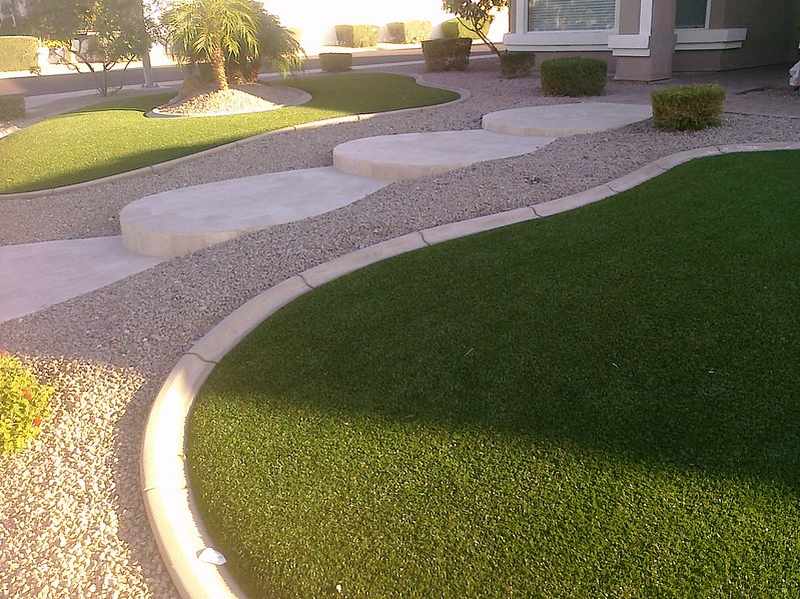
Photo Credit: Nick Bastian / Flickr / CC BY-ND 2.0
Hey, speak of the devil! Artificial turf gives you all the benefits of a lawn without the fertilizing, mowing, and watering. You can use it to increase your home’s curb appeal, give your kids and pets a yard to run around in, or use it as a bocce ball court or putting green.
But if you want a natural lawn, it’s important to start with a grass that not only survives but thrives in your area, whether it’s the wet, humid coastal regions or the hot, dry western reaches of the state.
The following grasses are some of the best in Texas:
- Zoysiagrass
- St. Augustinegrass
- Bermudagrass
- Centipedegrass
- Buffalograss
There’s no single grass that works for every lawn. Your grass choice will be affected by how much shade your lawn gets, how much foot traffic it can withstand, and how drought-tolerant it is.
For a more in-depth look at the best grass types in Texas, see this article.
Ground Covers
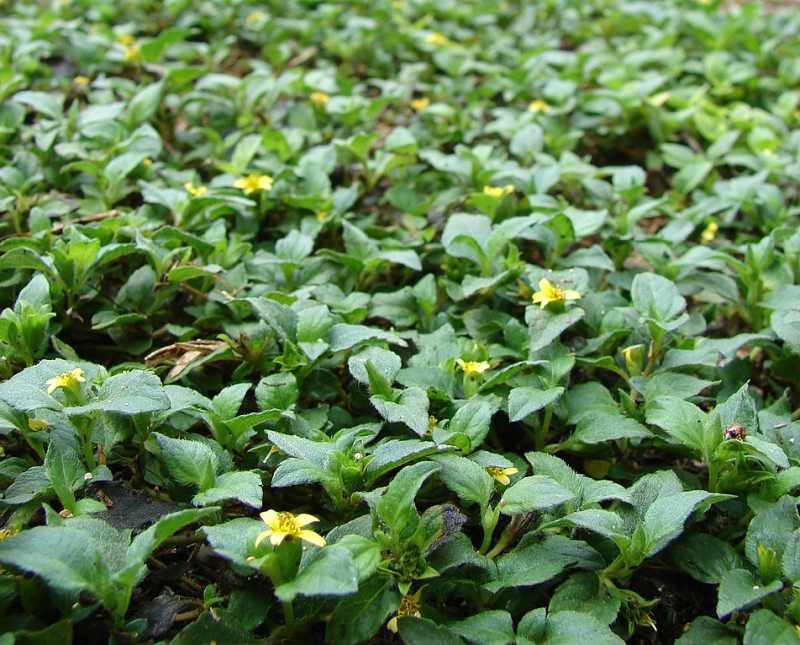
Photo Credit: Forest & Kim Starr / Wikimedia Commons / CC BY 3.0
If you don’t like the idea of fake grass, consider ground covers. Ground covers don’t grow tall, and they spread horizontally. You don’t need to mow them, which reduces yard work, and they are dense enough to keep weeds from getting a foothold.
However, ground covers are still plants, and require water, sunlight, and, in some cases, fertilizer.
Some examples of ground covers you can plant are:
- Straggler Daisy
- Ice Plant
- Purple Trailing Lantana
Hardscapes
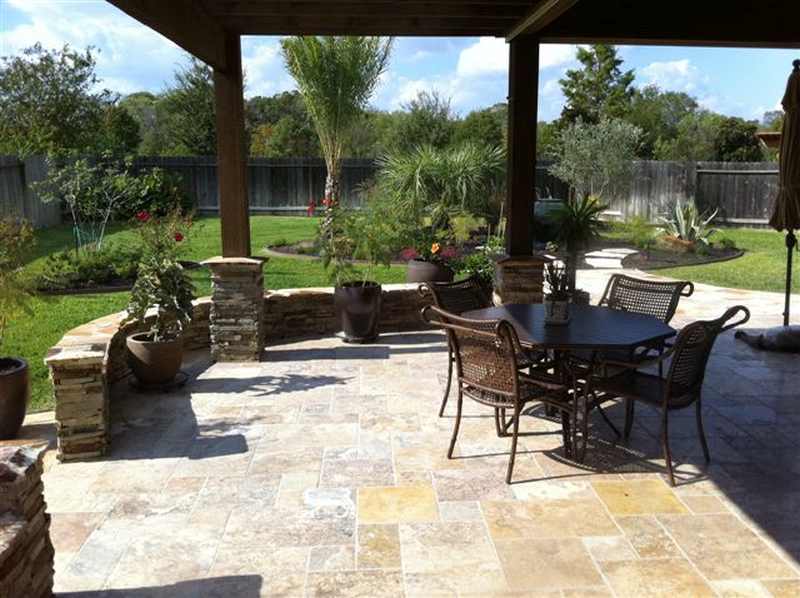
Photo Credit: Texas Custom Patios / Flickr / CC BY-SA 2.0
Hardscapes are any non-living elements in your yard. Hardscapes increase your backyard’s functionality, expand and enhance your living spaces, and boost your home’s curb appeal. Additionally, hardscapes reduce maintenance since there’s less grass to mow.
Some examples of hardscapes include:
- Fire pits
- Patios
- Outdoor Lighting
- Walkways
- Sitting walls
- Retaining walls
- Fences
- Pergolas
Native Plants
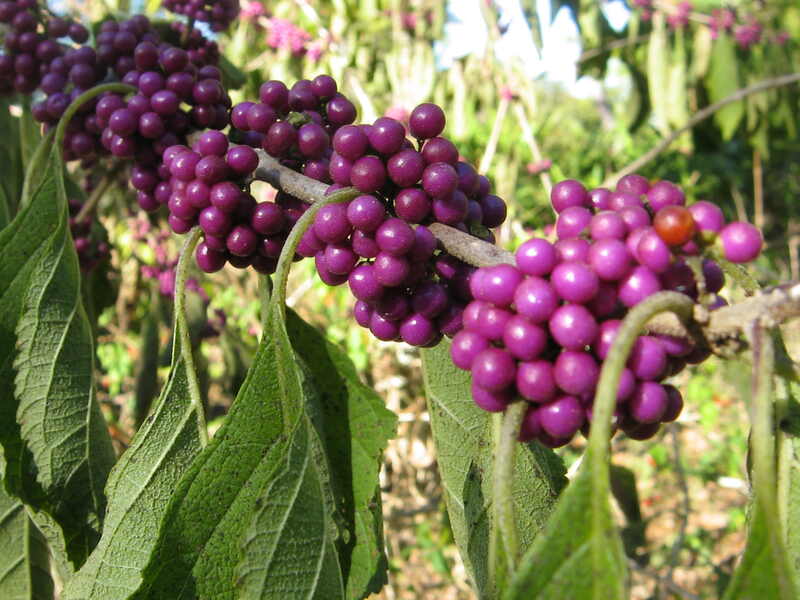
Photo Credit: Korall / Wikimedia Commons / CC BY-SA 3.0
Planting native plants cuts down on work and money substantially. Native plants are adapted to the climate, so they don’t need as much attention as non-native plants.
Texas’ variable climate means some plants do better in specific areas. For example, the beautyberry grows best in Central Texas, while the Arizona cypress thrives in West Texas.
While you can still grow beautyberry in North Texas or an Arizona cypress in South Texas; doing so just means these plants go from “low-maintenance” to “high-maintenance.” Not so enjoyable when the temperature climbs to 100°F.
Perennials
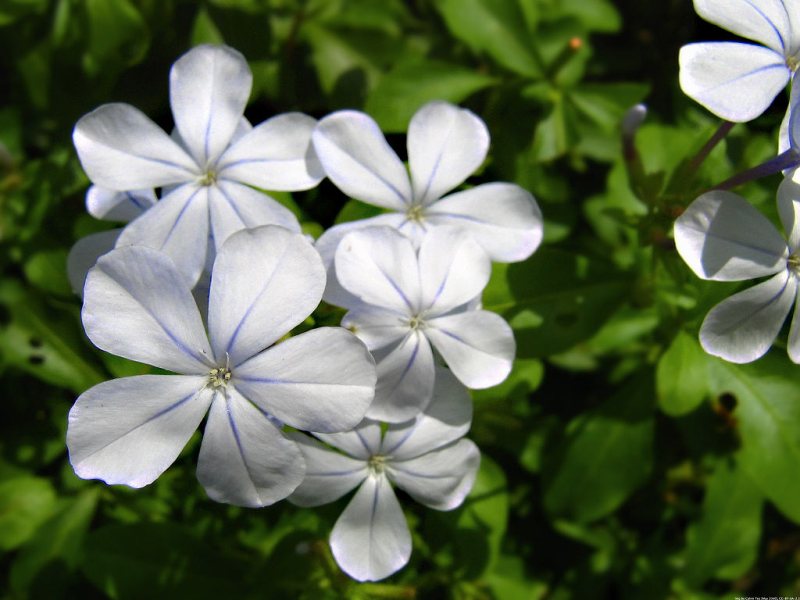
Photo Credit: No machine-readable author provided. Calvin Teo assumed (based on copyright claims). / Wikimedia Commons / CC BY-SA 2.5
Perennials make for a great garden, and they don’t cost a bundle. For many homeowners, winter becoming spring means buying and planting new plants (annuals) to replace the dead ones. Perennials grow back every year, meaning you don’t have to buy new plants, and once they’re established, they don’t need as much maintenance.
A few examples of perennials you can grow are:
- Frostweed
- Lamb’s Ear
- Plumbago
- Rain Lily
- Verbena
Xeriscapes
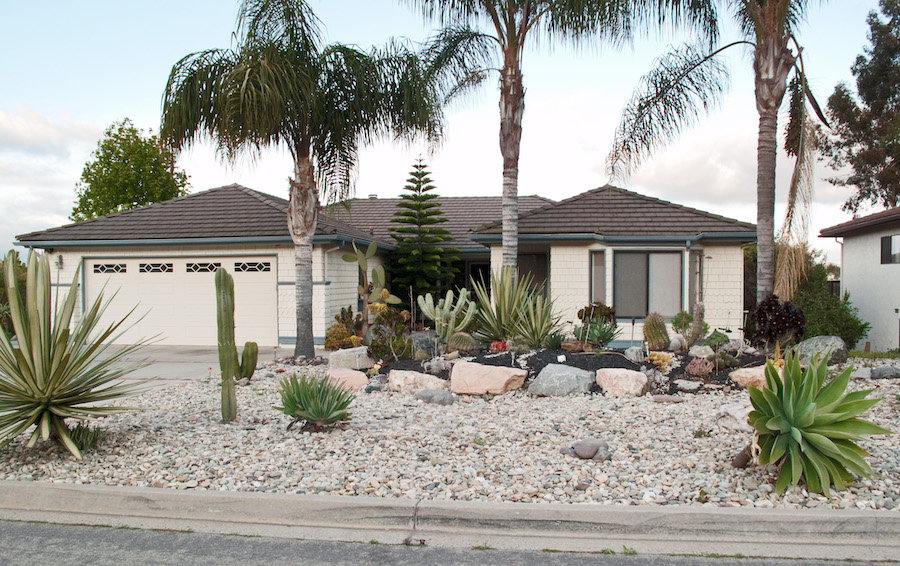
Photo Credit: Downtowngal / Wikimedia Commons / CC BY-SA 3.0
If you overwater your plants, you’ll waste water. If you underwater them, they’ll be browner than a bear. Xeriscaping achieves a happy medium.
Xeriscaping is a style of landscaping which aims to conserve water, lowering your utility bills in the process. It involves choosing native plants that don’t need much maintenance, attracting birds and butterflies, and saving money on fertilizers and pesticides.
Here are a few tips to help you get started with xeriscaping:
- Before planting, test your soil to see how much fertilizer it needs or if you need to add organic matter.
- Reduce the amount of turfgrass you add, and pick a grass that doesn’t need much water.
- Plan to use mulch, as it helps retain soil moisture and keeps roots cool.
Final Thoughts
There are countless ways to keep lawn chores to a minimum and spend less time in the Texas sun. However, when summer comes, and the heat becomes unbearable, even a few minutes can seem like an eternity.
Instead of landscaping and gardening yourself, hire one of Wikilawn’s local pros to do them for you.
Main Photo Credit: Zilker Botanical Garden / LoneStarMike / Wikimedia Commons / CC BY 3.0